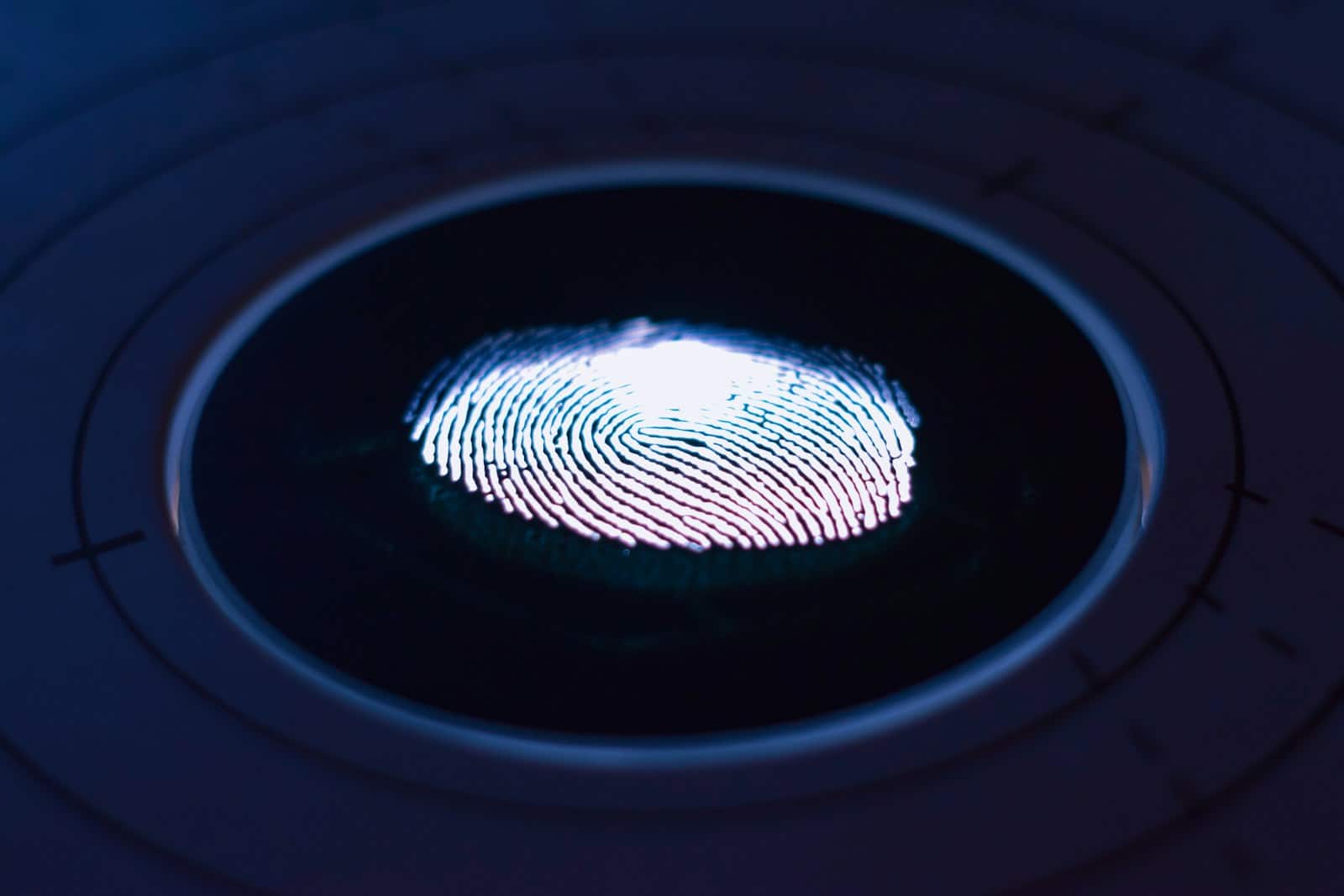Google is making a bold move in the world of online security by pushing users away from traditional passwords and towards biometric authentication methods. Users will now be prompted to create passkeys using fingerprints, face scans, or PINs instead of passwords for their Google accounts.
This shift aims to enhance security and user convenience. Passkeys are touted as faster and more secure than traditional passwords. Google claims they are 40 percent quicker to use. The new system integrates with users’ existing device security measures, making login processes more streamlined.
The change reflects a growing trend in the tech industry towards passwordless authentication. Other major companies are also exploring similar options. This move by Google could significantly influence how users interact with their online accounts in the coming years.
Enhanced Security with Biometric Authentication
The Shift Away from Traditional Passwords
Passwords, while familiar, have significant vulnerabilities. They can be guessed, phished, or cracked. Google recognizes these risks and is pushing for more secure authentication methods. Their latest move involves prioritizing biometric verification, specifically fingerprint scanning, for account logins. This change aims to reduce reliance on passwords and bolster user security. It’s a move mirroring a broader industry trend towards passwordless authentication.
How Fingerprint Authentication Works
Google’s fingerprint authentication leverages WebAuthn, a secure web standard. This allows websites and apps to request biometric verification directly from the user’s device. When you try to log in to a Google service, like Gmail or Drive, you might be prompted to touch your device’s fingerprint sensor instead of typing your password. This process links your device to your Google account, making it harder for unauthorized individuals to gain access, even if they know your password.
Benefits of Fingerprint Logins
- Increased Security: Fingerprints are unique and difficult to replicate, providing stronger protection against unauthorized access.
- Improved Convenience: Biometric logins are often faster and easier than typing passwords, streamlining the login process.
- Reduced Phishing Risk: Phishing attacks become less effective because they can’t easily capture fingerprint data.
Supported Devices and Platforms
This feature works on devices equipped with fingerprint sensors, including most modern smartphones and laptops. It is integrated with Chromebooks, allowing for seamless logins. The feature is also available on any website that supports the WebAuthn standard.
Comparison of Authentication Methods
| Method | Pros | Cons |
|---|---|---|
| Passwords | Familiar, widely supported | Vulnerable to guessing, phishing, and cracking |
| Fingerprint Authentication | Highly secure, convenient | Requires devices with fingerprint sensors |
| Two-Factor Authentication (2FA) | Adds an extra layer of security | Can be cumbersome, requires an additional device or app |
Addressing Common Concerns
- Privacy: Google states that your fingerprint data is securely stored on your device and is not shared with Google or other websites.
- Device Security: Ensure your device’s operating system and security software are up to date to protect your fingerprint data.
The Future of Authentication
Fingerprint authentication is just one step in the evolution of online security. Other biometric methods, like facial recognition, are also gaining traction. The long-term goal is to move away from passwords entirely, creating a more secure and user-friendly online experience. Google’s push for fingerprint logins is a significant move in that direction.
Beyond Fingerprints: Exploring Passkeys
Fingerprint authentication is better than passwords, but a new technology called passkeys takes this a step further. Passkeys are secure codes stored on your devices, like your phone or computer. They can sync across your devices, allowing you to log in to websites and apps without using a password. Each passkey is unique to a specific website, making them much harder to steal through phishing or data breaches.
Tech companies like Google promote passkeys as the future of secure logins. They combine security and ease of use, and they could eventually replace passwords entirely. Passkeys work on different operating systems and devices, which makes them a universal solution for safe logins. This shift to using passkeys and fingerprints signals a big change in how we access online services, leading to a more secure and smooth digital experience.
Key Takeaways
- Google is promoting passkeys over passwords for account security
- Passkeys use biometrics or PINs and are faster than traditional passwords
- This change aligns with industry trends towards passwordless authentication
Evolving Security: The Shift to Biometrics and PINs
The move from passwords to biometric authentication, like using fingerprints for login, is a major shift in online security. Traditional passwords are weak and can be attacked in many ways. By using biometrics, we can create a safer and easier online experience. This change goes beyond just replacing passwords; it aims to strengthen our digital world. When companies like Google adopt these new technologies, it shows a growing trend toward passwordless login. This could lead to a future where logging in is as simple and secure as touching a sensor.
Google’s latest security push marks a significant shift from traditional passwords to biometric authentication and PINs. This move aims to enhance user protection against cyber threats while simplifying the login process.
Understanding Password Vulnerabilities
Passwords have long been the primary method of account protection. However, they come with inherent weaknesses. Users often create weak passwords or reuse them across multiple accounts. This practice makes them vulnerable to data breaches and phishing attacks.
Cybercriminals employ sophisticated techniques to steal passwords. They may use social engineering tactics or exploit security vulnerabilities in websites and applications. Once obtained, these stolen credentials can be used to access sensitive information or commit identity theft.
Password managers offer some protection by generating and storing complex passwords. Yet, they still rely on a master password, which can be compromised.
Advancements in Biometric Technology
Biometric authentication has emerged as a more secure alternative to passwords. This technology uses unique physical characteristics to verify identity.
Fingerprint recognition is widely adopted in smartphones and laptops. It offers quick and convenient access while maintaining a high level of security. Face recognition has also gained popularity, especially with Apple’s Face ID system.
Recent advancements have improved the accuracy and reliability of biometric systems. They can now differentiate between a real person and a photo or mask. Some systems even incorporate liveness detection to prevent spoofing attempts.
Voice recognition and iris scanning are other biometric options being explored. These methods provide additional layers of security for sensitive applications.
PINs as a Supplementary Security Measure
Personal Identification Numbers (PINs) complement biometric authentication. They serve as a backup when biometric sensors fail or are unavailable.
PINs are easier to remember than complex passwords. They also don’t require special characters or frequent changes. This simplicity reduces the likelihood of users writing down their credentials or choosing weak options.
Many devices now combine biometrics with PINs for two-factor authentication. This approach significantly enhances security by requiring two separate verification methods.
The Role of the FIDO Alliance in Standardizing Security
The FIDO (Fast IDentity Online) Alliance plays a crucial role in standardizing authentication protocols. It brings together tech giants like Google, Apple, and Microsoft to create open standards for passwordless authentication.
FIDO2 is the latest standard developed by the alliance. It enables users to leverage common devices to authenticate to online services in both mobile and desktop environments.
The alliance’s work promotes interoperability between different platforms and devices. This ensures a consistent and secure user experience across various services and applications.
Compatibility Across Platforms and Devices
Google’s push for biometrics and PINs extends beyond its own ecosystem. The company is working to ensure compatibility with various platforms and devices.
Android devices already support fingerprint and face recognition for Google accounts. ChromeOS laptops often include fingerprint sensors for easy login.
Google Chrome browser on Windows and Mac computers can use the operating system’s built-in biometric capabilities. This allows for seamless integration with existing hardware.
The company is also collaborating with other tech giants to ensure cross-platform compatibility. This effort aims to create a unified authentication experience across different devices and services.
Privacy and Data Protection Considerations
The shift to biometric authentication raises important privacy concerns. Biometric data is highly sensitive and requires robust protection.
Google and other companies implementing these technologies must adhere to strict privacy policies. They typically store biometric data locally on the device rather than on cloud servers.
Encryption and secure enclave technologies protect biometric information from unauthorized access. Users should review the terms of use and privacy policies of services utilizing their biometric data.
It’s crucial for companies to be transparent about how they collect, use, and store biometric information. This helps build trust with users and ensures compliance with data protection regulations.
Frequently Asked Questions
Google’s new authentication system brings significant changes to user security and login processes. Here are key details about passkeys, biometric options, and the shift away from traditional passwords.
How does Google’s new password system enhance user security?
Passkeys offer stronger protection against phishing and hacking attempts. They use cryptographic keys instead of easily guessable passwords. This method makes it much harder for attackers to gain unauthorized access to user accounts.
What are the implications of using fingerprints and PINs instead of passwords for Google users?
Users can log in faster and more securely with biometrics or PINs. Fingerprint scans and face recognition are quicker than typing passwords. These methods also reduce the risk of forgotten passwords or account lockouts.
How can users set up their Google passkey on Android devices?
Users can enable passkeys in their Google account settings. They need to select the security options and choose to create a passkey. The device will then guide them through the setup process, which may involve registering their fingerprint or setting a PIN.
In what ways does Google’s ‘Skip password when possible’ feature improve user experience?
This feature streamlines the login process. Users can access their accounts more quickly without entering complex passwords. It reduces friction in daily digital interactions and saves time across multiple apps and services.
What challenges might users face with the adoption of passkeys?
Some users may need time to adjust to the new system. Device compatibility could be an issue for older Android models. Users might also face difficulties when switching between devices or platforms that don’t yet support passkeys.
How does Google Password Manager integrate with the new authentication methods?
Google Password Manager stores and syncs passkeys across devices. It allows users to manage their passkeys in one central location. The manager also helps users transition from traditional passwords to the new passkey system seamlessly.







